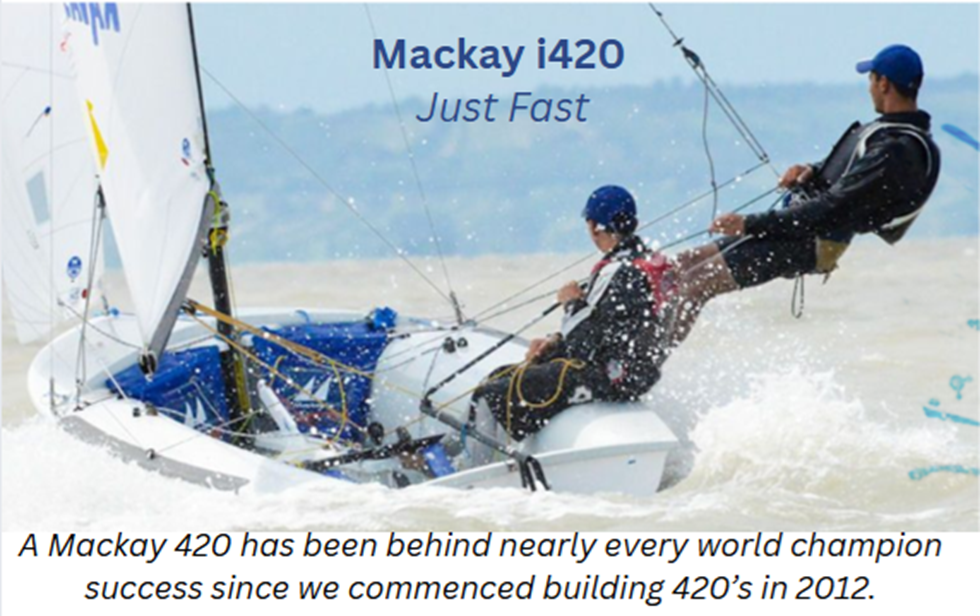Youngest to sail solo non-stop unassisted around the World
Jessica Watson is setting out to become the youngest person to sail solo non-stop and unassisted around the World. Since Joshua Slocum first sailed singlehanded around the world in the late 1890’s, sailors of all nationalities and ages have been drawn to this ultimate challenge: The Everest of sailing.
Slocum’s epic tale of his voyage, “Sailing Alone Round the World”, has captivated a global audience of readers for over a hundred years. Following on, record-breaking solo circumnavigations by heroes like Francis Chichester and Robin Knox-Johnston have captured the attention and the hearts of people all over the world.
Jessica is driven.
Inspired in her turn by Kay Cottee, the first woman to sail solo non-stop unassisted around the world and by Jesse Martin, the youngest person to do so, Jessica Watson has set her sights on shattering Jesse’s record. In the process, Jessica hopes to inspire young sailors, adventurers and everyone with a dream in their heart.
Visit Jess’s website: http://www.youngestround.com/
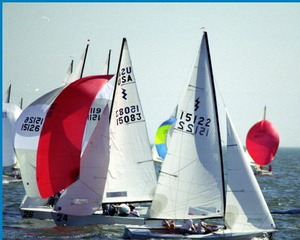 The International Lightning Get The Best Of Both Worlds
The International Lightning Get The Best Of Both Worlds y’s Technology
y’s Technology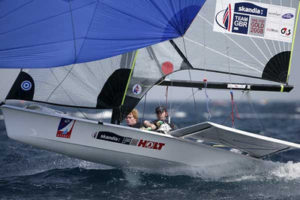 The 49er is a very fast double-handed twin trapeze skiff. Designed by Julian Bethwaite, this is an exhilarating ride, and requires a fair amount of technical skill to sail. The boat is experiencing an increase in popularity due to its selection as an Olympic class starting with the Sydney Olympics of 2000. It features a very large asymmetric spinnaker.
The 49er is a very fast double-handed twin trapeze skiff. Designed by Julian Bethwaite, this is an exhilarating ride, and requires a fair amount of technical skill to sail. The boat is experiencing an increase in popularity due to its selection as an Olympic class starting with the Sydney Olympics of 2000. It features a very large asymmetric spinnaker. With over 500,000 boats built the Sunfish is a very popular one-design class sailboat designed in the 1950s. As a singlehanded boat, the Sunfish is easy to car-top or trailer. The Sunfish is used as a day sailer or a racing boat, with over 1000 racing events every year worldwide. Key to the Sunfish’s success are simplicity and low cost. A Sunfish can be sailed using only two lines, the halyard and the Sheet. The only other necessary control is the tiller. A Sunfish setup for racing will typically add outhaul, cunningham, a gooseneck quick-release adjuster, and vang lines.
With over 500,000 boats built the Sunfish is a very popular one-design class sailboat designed in the 1950s. As a singlehanded boat, the Sunfish is easy to car-top or trailer. The Sunfish is used as a day sailer or a racing boat, with over 1000 racing events every year worldwide. Key to the Sunfish’s success are simplicity and low cost. A Sunfish can be sailed using only two lines, the halyard and the Sheet. The only other necessary control is the tiller. A Sunfish setup for racing will typically add outhaul, cunningham, a gooseneck quick-release adjuster, and vang lines.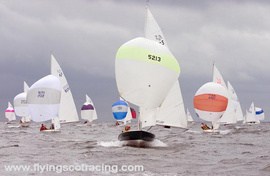 The Flying Scot is a day sailer dinghy used for pleasure sailing as well as racing throughout North America. The Flying Scot was designed in 1957 by Gordon K. (Sandy) Douglass who had already designed the Thistle and Highlander dinghies.
The Flying Scot is a day sailer dinghy used for pleasure sailing as well as racing throughout North America. The Flying Scot was designed in 1957 by Gordon K. (Sandy) Douglass who had already designed the Thistle and Highlander dinghies.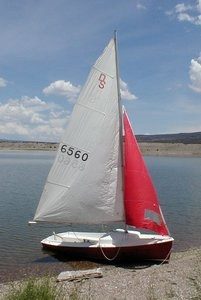 The Day Sailer is a day sailer for pleasure sailing as well as racing; it is sailed throughout North America and Brazil. The Day Sailer was designed in 1958 by Uffa Fox and George O’Day. O’Day envisioned a centerboarder that would have a beam of about 6 feet, flotation fore and aft, a small cuddy cabin, and an aluminum mast and boom. By 1958, the two agreed on the lines and the general layout for the boat that O’Day would call the Day Sailer. The sail area, especially with the spinnaker, is relatively modest, which makes for a fairly “user-friendly” boat.
The Day Sailer is a day sailer for pleasure sailing as well as racing; it is sailed throughout North America and Brazil. The Day Sailer was designed in 1958 by Uffa Fox and George O’Day. O’Day envisioned a centerboarder that would have a beam of about 6 feet, flotation fore and aft, a small cuddy cabin, and an aluminum mast and boom. By 1958, the two agreed on the lines and the general layout for the boat that O’Day would call the Day Sailer. The sail area, especially with the spinnaker, is relatively modest, which makes for a fairly “user-friendly” boat.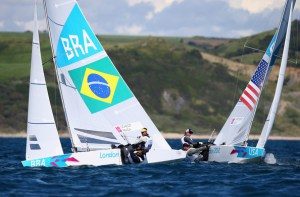 The venerable, elegant Star. This boat for years has attracted the world’s best one-design sailors. The Star is one of the most prolific keelboats in the world for a reason: it is an incredible boat to sail. Designed in 1911 by Francis Sweisguth, it has proven to be a classic in every sense. It is the oldest Olympic class, having first been used in competition in 1932, and still at the heart of that competition today. Supported by a worldwide association the Star as a class is one of the best organized in sailing, with over 7,500 yachts built over its 80 year history, and 2000-plus actively racing today.
The venerable, elegant Star. This boat for years has attracted the world’s best one-design sailors. The Star is one of the most prolific keelboats in the world for a reason: it is an incredible boat to sail. Designed in 1911 by Francis Sweisguth, it has proven to be a classic in every sense. It is the oldest Olympic class, having first been used in competition in 1932, and still at the heart of that competition today. Supported by a worldwide association the Star as a class is one of the best organized in sailing, with over 7,500 yachts built over its 80 year history, and 2000-plus actively racing today.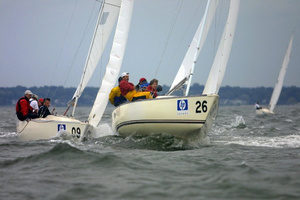 It started when Bruce Kirby’s home club (Noroton Yacht Club, Darien, CT USA) couldn’t find the right boat to get their members involved in club racing; fewer and fewer of its members were participating.
It started when Bruce Kirby’s home club (Noroton Yacht Club, Darien, CT USA) couldn’t find the right boat to get their members involved in club racing; fewer and fewer of its members were participating. When the Sonar was designed and orders taken for the first fleet of boats at Noroton Yacht Club, in Darien, Connecticut, the original fleet members recognized a need to create an organization with a Constitution, By-laws and Class Rules that control the growth of the class. Early membership was just a few key people, but these people had a passion for this new and very special boat and their passion spread as new fleets sprang up around North America. Early membership grew at a rapid pace as boats were built. Sonars worldwide now number over 700 with fleets in over six countries.
When the Sonar was designed and orders taken for the first fleet of boats at Noroton Yacht Club, in Darien, Connecticut, the original fleet members recognized a need to create an organization with a Constitution, By-laws and Class Rules that control the growth of the class. Early membership was just a few key people, but these people had a passion for this new and very special boat and their passion spread as new fleets sprang up around North America. Early membership grew at a rapid pace as boats were built. Sonars worldwide now number over 700 with fleets in over six countries.